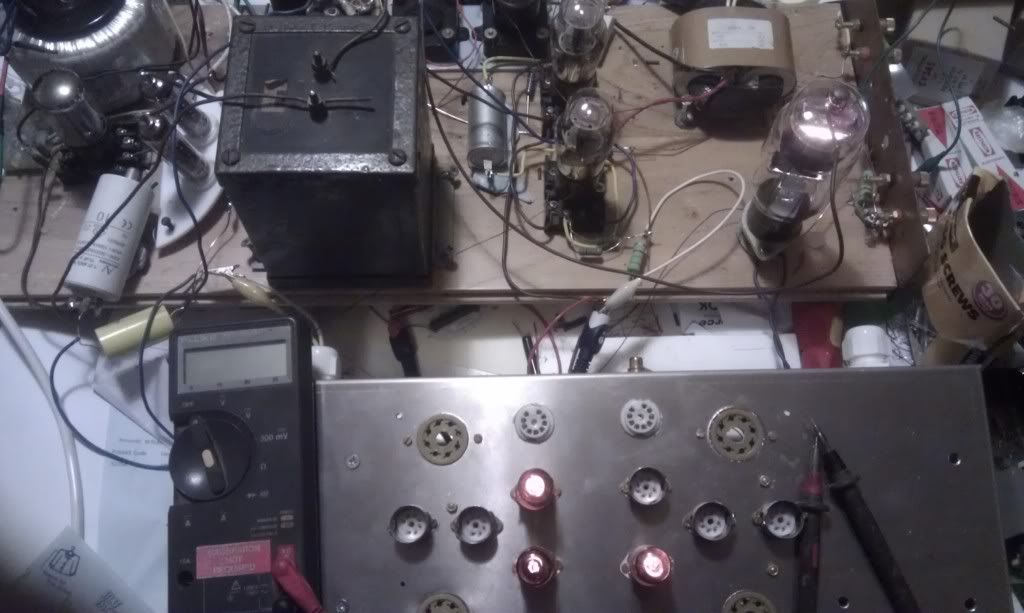Paul's suggestion of a series regulator followed by a shunt reg, Nicks push pull regulator musings and a bit of Morgan Jones appears to have led me to
the realisation that the SRPP circuit if configured as a regulator is if you look at it exactly that;
a series followed by shunt reg.
So I have tried to design one around a 6080 double triode as below.

I have elevated the cathode of the shunt valve so that it sits at approximately half the raw HT, so that I can (very roughly) split the drops across each valve to about 100V each.
100V drop at 40mA through the series valve gives a bias of around 42V which is provided by the voltage drop across the 1K resistor being fed back to the grid of series valve.
The shunt valve bias is provided by the potential divider across the output of the whole thing.
A problem I can see is the low gain of the 6080. In this arrangement, the shunt valve has two duties to perform, as it not only has to regulate but also
provide the error-amp function for the series valve and with its crappy gain of only 2, maybe it is not going to be that good.
So I read a bit of a Hunt and Hickman paper I found on the interweb where they used a constant current approach to improving the DC regulation for the scientific instruments.
Looking at that and bringing it up to date, I simply stuck a current regulating diode at the bottom of the potential divider network on the output.
This is only a start so any comments would be gratefully received.
I'm already thinking about maybe using a pair of triode strapped 12GN7s
to replace the 6080.
They have a Pd of 10W and high gain/gm which might allow the shunt valve to better perform as an error amplifier.


